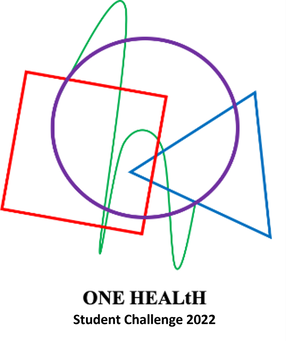2022 One HEALtH Challenge Case Study:
Gaining from Greenspaces

One Health entails an awareness of the complex relationships among the many elements that influence human mental and physical health, including human factors (individual, social and cultural determinants), environmental determinants (living arrangements, pollution, geographical features), and interactions with animals (including pets, livestock, and wildlife (even insects)).
This year’s One Health Challenge (OHC) will focus on human, environmental and wildlife health in the shared use of urban greenspaces.
Currently, a large body of evidence suggests that there are positive impacts of urban green spaces on human physical and mental health. Spending time in green spaces and in nature can help address public health issues related to physical activity, obesity, cardiovascular illnesses, mental health and well-being (WHO, 2016). Green spaces can have positive effects on the urban environment by mitigating noise, light, and air pollution, temperature regulation and reducing the likelihood of flooding (Kingsley, 2019). By creating or maintaining greenspaces, the ecosystem supporting wildlife is improved, which is further associated with human health benefits. For example, there is evidence to suggest that biological diversity and exposure to the sounds of nature can promote human mental health (Buxton et al., 2021).
The COVID-19 pandemic highlighted the need for outdoor greenspaces. Outdoor parks and spaces were noticeably vital to well-being among residents of urban areas. However, there are also social inequities associated with distribution and access to such spaces. Thus, maximizing public benefit will require an approach that incorporates an understanding of systemic biases that involve sociodemographic factors.
While there are many benefits to urban greenspaces, there needs to be a balance between human use and environmental impacts. In fact, while urban dwellers may benefit most from greenspaces, urban growth is one of the biggest threats to these spaces and the biological diversity that they are able to support. The use of such spaces will need to consider strategies to promote human activities and uses that attenuate negative impacts, and even better, promote urban biodiversity and ecosystem health.
Each team must consider multiple disciplinary perspectives to design an intervention that effectively promotes the healthy public use of greenspaces while attenuating negative impacts. You might consider:
Your challenge is to integrate perspectives from multiple disciplines to create an intervention that promotes the public health benefits of enjoying the use of greenspaces in urban areas, while balancing the potential negative impacts on ecological health and biodiversity.
This year’s One Health Challenge (OHC) will focus on human, environmental and wildlife health in the shared use of urban greenspaces.
Currently, a large body of evidence suggests that there are positive impacts of urban green spaces on human physical and mental health. Spending time in green spaces and in nature can help address public health issues related to physical activity, obesity, cardiovascular illnesses, mental health and well-being (WHO, 2016). Green spaces can have positive effects on the urban environment by mitigating noise, light, and air pollution, temperature regulation and reducing the likelihood of flooding (Kingsley, 2019). By creating or maintaining greenspaces, the ecosystem supporting wildlife is improved, which is further associated with human health benefits. For example, there is evidence to suggest that biological diversity and exposure to the sounds of nature can promote human mental health (Buxton et al., 2021).
The COVID-19 pandemic highlighted the need for outdoor greenspaces. Outdoor parks and spaces were noticeably vital to well-being among residents of urban areas. However, there are also social inequities associated with distribution and access to such spaces. Thus, maximizing public benefit will require an approach that incorporates an understanding of systemic biases that involve sociodemographic factors.
While there are many benefits to urban greenspaces, there needs to be a balance between human use and environmental impacts. In fact, while urban dwellers may benefit most from greenspaces, urban growth is one of the biggest threats to these spaces and the biological diversity that they are able to support. The use of such spaces will need to consider strategies to promote human activities and uses that attenuate negative impacts, and even better, promote urban biodiversity and ecosystem health.
Each team must consider multiple disciplinary perspectives to design an intervention that effectively promotes the healthy public use of greenspaces while attenuating negative impacts. You might consider:
- Mental health issues (happiness, reduced anxiety, stress)
- Physical health (physical activity, diet, heart disease)
- Technological applications (for example, environmental monitoring; human activity)
- Urban planning and design, including public or social spaces
- Cultural understandings of the human-environment (land) relationship
- Human-centred product and process design
- Public health guidelines (e.g., COVID-19 restrictions)
- Sociodemographic biases in urban planning and policy
- Media communications to promote buy-in or pro-environmental behaviours
- Age-related factors, including considerations associated with youth and older adults
- Implications regarding companion pets
- Infrastructure and urban dwellings
- Healthcare policies and finances
- Community-based research methods and consultation processes
- School or work based intervention programs
- Rehabilation programs (i.e., for patients with chronic disease)
- Much more
Your challenge is to integrate perspectives from multiple disciplines to create an intervention that promotes the public health benefits of enjoying the use of greenspaces in urban areas, while balancing the potential negative impacts on ecological health and biodiversity.
2022 Challenge Resources:
